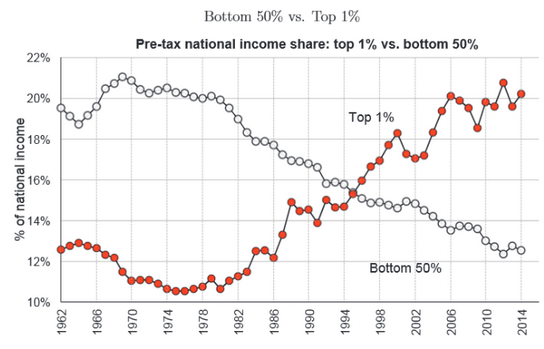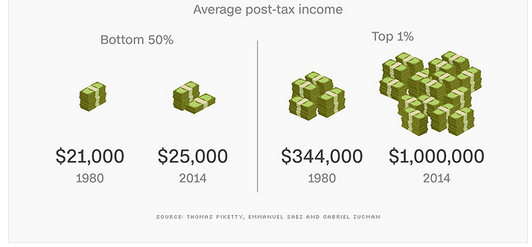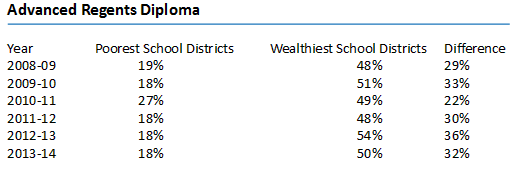Introduction
The purpose of this paper is to describe and analyze the inequality of opportunity in the New York Stock Exchange with a goal of identifying the reasons behind the opportunity disparities between the rich and the poor in the concerned market.
The research problem is that overtime the inequalities of the US are getting worse, and the gap between the lower-income earners (representing majority of the population) and the bourgeoisie are escalating nowadays, whilst a sturdy financial market like the New York Stock Exchange is turning into money-making engine for the affluent (who represent only a minority). Thus, there are sharp inequalities of opportunities offered in the stock market to the relevant segmentations of the society.
This is a huge problem for the society, and it is significant for people to be aware of it because this allows bourgeoisie to have enormous control over other’s lives, destabilize the justness of political institutions, challenge the evenhandedness of fiscal system, cause living standards of majorities to fall, creating job losses, social chaos, and deterioration of law and order.
Stock Markets and Inequality of Opportunity
The intense class conflict created by the stock markets became apparent during the Occupy Wall Street protests (Stiglitz 12), which first started in the US, but later spread to parts of Europe as well (Stiglitz 10). The national notion of equal opportunities for all is gradually becoming a myth due to the extreme disproportionately (Stiglitz 60), and the market system is corroding the fundamental humanitarian values (Stiglitz 24).
NYSE and the Rising Disparity of Opportunity
The inequalities were much lesser in the 1980s because fewer multinationals controlled the economy and corporate aggression was not excessively interruptive – at present; greater austerity means top level corporate executives and bankers are charged smaller taxes, whilst the bigger burdens are imposed on people through declining public spending and higher public taxes (Piketty et al. 28).
There are rising criticisms about the New York Stock Exchange and the way in which it operates and regulates the financial system; it is frequently suggested that NYSE uses mechanisms to keep cost of accessing the market higher – as a result, the corporate giants and other affluent individuals are able to access and manipulate the market freely (Turner). However, due the higher market access cost, the new entrants and the small or medium-sized businesses are barred from operating and sustaining in the market over the longer period, giving the stronger players an exclusive power to grasp greater market share.
It is important to note that inequality in the US market is deteriorating persistently, and the topmost rich people (representing one percent of the population) are generating more than one million dollars annually, which is thrice as much as the income they earned back in1980s – this part of the population takes above 20 percent of the national income (Long). On the other hand, the poorest people (representing fifty percent of the population), earned around sixteen thousand dollars back in 1980s, whereas now, surprisingly, they take home only twelve percent of the national income (Long):

In addition, whilst the earnings of the richer people have risen dramatically, this was not the case for the poorer part of the society; in 1980, the ‘top one percent’ earned around $344,000, which rose to $1,000,000 in 2014 – conversely, the ‘bottom fifty percent’ earned around $21,000 in 1980, which increased to only $25,000 in 2014:

It has been suggested that whilst both rich and poor were affected by the global financial crisis in the US, the rich recovered faster and became richer through market exploitation, whereas the poor lacked this opportunity and got poorer (Lundeen). Thus, inequality of opportunity is present in NYSE, which is merely worsening day by day and creating a circumstance whereby reversing the broadening gap is becoming nearly impossible.
Revising the Thesis
Inequality of opportunity exists between the rich and the poor in the NYSE because of several reasons (Bor and Galea), which include excessive control from the multinational corporations, manipulations from the market giants (Yellen 51), economic framework, market structure, governmental policies (Owyang and Shell 2), and so on.
Revisiting Arguments and Implications of the Research
Giving significance to inequality of opportunities in the NYSE is essential, as this has huge impact over the society (Stiglitz 83); for example, inequality of wealth deteriorates social order (Galbraith 62), creates job losses, and disturbs equal educational opportunities for all (AQENY 7):

Relevance of the Material
All materials used in this research are relevant, since AQENY, Long, Lundeen, Owyang and Shell, and Turner directly discusses about the opportunity inequality in NYSE, whilst Bor and Galea, Galbraith, Stiglitz, Yellen, and Piketty analyses the implications of the problem. From these sources, the inequality in the NYSE becomes apparent; so, it can be concluded that the crisis can hamper the country extensively.
Conclusion
Opportunity inequality exists in NYSE, and it is highly essential for the government to address and resolve the issue in the upcoming years – not just to prevent social degradation, but also to preserve the American dream.
Works Cited
AQENY. “Record Setting Inequality: New York’s Opportunity Gap is Wider Than Ever.” AQENY. Web.
Bor, Jacob, and Sandro Galea. “The Cost of Economic Inequality to the Nation’s Physical Health.” Boston Globe, 2017. Web.
Galbraith, James. Inequality and Instability: A Study of the World Economy Just before the Great Crisis. Oxford University Press, 2012.
Long, Heather. “U.S. Inequality Keeps Getting Uglier.” CNN, 2016. Web.
Lundeen, Andrew. “The Stock Market and Inequality.” Tax Foundation. 2014. Web.
Owyang, Michael, and Hannah Shell. “Taking Stock: Income Inequality and the Stock Market.” Stlouisfed. 2016. Web.
Piketty, Thomas, et al. “Distributional National Accounts: Methods and Estimates for the United States.” NBER. 2016. Web.
Stiglitz, Joseph. The Price of Inequality: How Today’s Divided Society Endangers Our Future. W.W. Norton & Co, 2012.
Turner, Matt. “The New York Stock Exchange is Fighting Back against Its Critics.” Business Insider, 2017. Web.
Yellen, Janet. “Perspectives on Inequality and Opportunity from the Survey of Consumer Finances.” The Russell Sage Foundation Journal of the Social Sciences, vol. 2, no. 2, 2016, pp. 44-59.